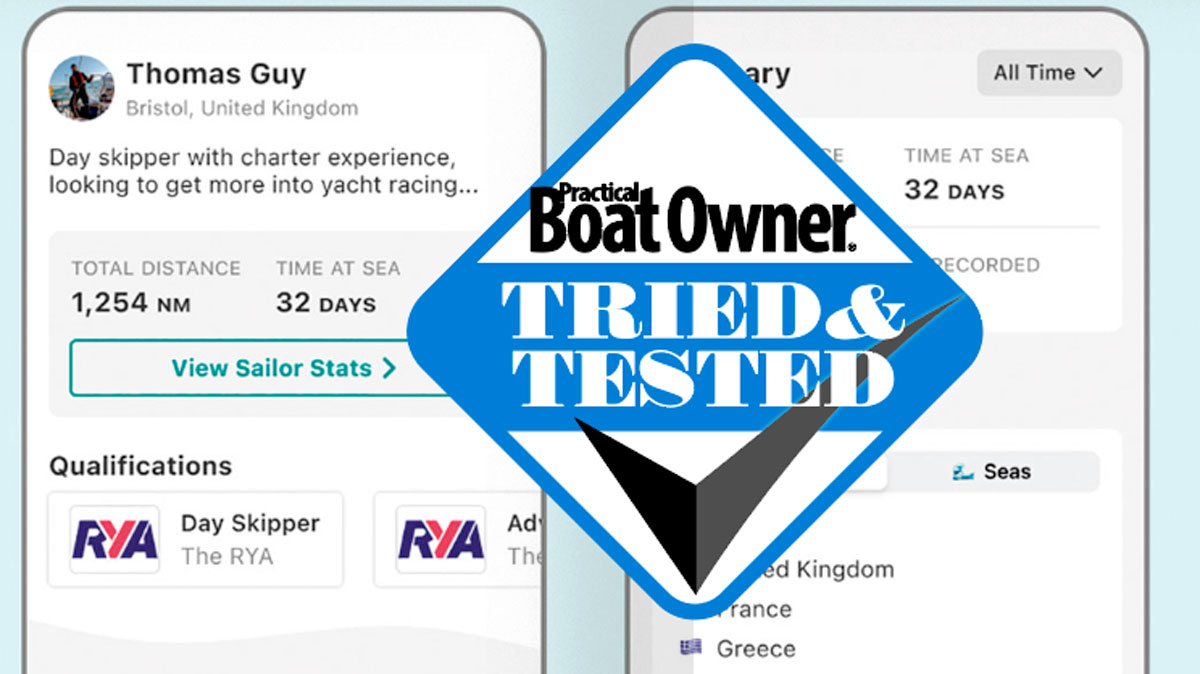Rupert Holmes tests the Ocean Signal RescueME PLB3, one of the first personal locator beacons on the market with personal AIS
Ocean Signal RescueME PLB3 locator beacon with AIS
Ocean Signal RescueME PLB3 locator beacon with AIS tried and tested
Personal Locator Beacons (PLBs) and personal AIS units have markedly improved the chances of a successful recovery of a crewmember who falls overboard.
But until this year they were only available as separate devices, so there’s a tendency not to wear both at the same time, thereby limiting the chances of a quick rescue.
In any case, activating two separate devices while you’re in the water wearing heavy foul-weather gear and a lifejacket is likely to be difficult.
The ideal is to combine both into a single unit that can be fitted inside a lifejacket; even better if it can be triggered automatically when the lifejacket inflates, so that it works even if a crewmember falls overboard while unconscious.

The Ocean Signal RescueME PLBS is considerably bigger than the MOB1. Credit: Rupert Holmes
That’s exactly what Ocean Signal RescueME PLB3 Personal Locator Beacon (incorporating AIS) does.
Ocean Signal was a forerunner in developing both PLBs and personal AIS units, with the MOB1 personal AIS and PLB1, so it’s no surprise that it was one of the first manufacturers to offer a combined unit once regulatory approval could be gained and technical challenges overcome.
One of the latter is that both AIS and PLB signals are required to run for 24 hours, which requires a bulky battery given the comparatively big power drain of the AIS element.
Although a lot larger than the MOB1, the Ocean Signal RescueME PLB3 is still designed to fit on the oral inflation tube of a lifejacket, which will automatically give the antennae a clear view of the sky.

The Ocean Signal RescueME PLBS comfortably fits onto a lifejacket. Credit: Rupert Holmes
Nevertheless, Ocean Signal recommends checking suitability with your lifejacket manufacturer.
Fitting for the first time, and installing the auto-activation ribbon correctly, is fiddly but becomes easier and faster with practice.
Despite the extra bulk compared to the AIS MOB1 unit, with a little perseverance it wasn’t particularly difficult to fit onto my Crewsaver and TeamO lifejackets.
Continues below…
PBO Tested: 17 lifejackets
Five dedicated testers took to the RNLI College's training pool to put 17 lifejackets through their paces.
Family sailing safety gear: TESTED!
Ali Wood discusses the sailing safety gear she chose for their first family cruise on board their Maxi 84, and…
SailTies sailing log app: tried and tested
Rupert Holmes tests the personal sailing log app, SailTies, which records passages, collates photos you take while en route and…
KWB DrillBlock handheld drilling jig: tried and tested
Sometimes just knowing what a tool is called is enough to get you out of a pickle. Jake Frith tests…
Automatic activation happens in the same way as for the existing AIS MOB1 unit, using a ribbon that passes around the lifejacket bladder.
In the rare event that the jacket inflates accidentally, the test/off switch needs to be pressed for a couple of seconds.
If this is done within 30 seconds of activation there’s no need to inform the Coastguard to cancel the distress alert.
Additional features include Galileo Return Link Service (RLS) that confirms the signal has been received by the Cospas-Sarsat satellite system and is being routed to search and rescue agencies. This is typically received within 30 minutes.

Both the AIS amd PLB signals will transmit for 24 hours. Credit: Rupert Holmes
There’s also an NFC (near-field communication) connection for easy pairing with a mobile phone.
This proved easy to activate, with my iPhone picking it up quickly and giving access to battery state and test history.
However, this doesn’t eliminate complex sequences of flashing lights that indicate different states of AIS, PLB, Return Link Service and test functions.
It’s therefore worth laminating the relevant pages of the manual as an easy-to-access aide-memoire that can be used on deck.
Ideally safety kit should be intuitive and easy to operate without reference to the manual, but the nature of this device means there’s a lot of information to digest.
However, it still earns five stars in recognition of being a huge and welcome step forward in personal safety, especially offshore or at night.
Beyond the acronyms
Personal Locator Beacons (PLBs) work in a very similar manner to EPIRBs (Emergency Position Indicating Radio Beacons), transmitting a 406MHz signal to a network of satellites, which is then beamed down to terrestrial maritime rescue coordination centres (MRCCs).
However, PLBs are more compact, cannot be water-activated and must be held with the antenna pointing at the sky.
They also have a shorter operational battery life of 24 hours. They can be a great way to raise the alarm and summon help from rescue agencies, but PLBs can’t communicate with your boat or with other vessels nearby.
That’s where personal AIS (Automatic Identification System), which operates on marine VHF radio frequencies, is a benefit.
As soon as it’s activated the casualty’s location will pop up on the screen of all but the most elderly and basic of chartplotters – whether on your boat or others nearby – provided they’re connected to an AIS receiver. This is usually accompanied by on-screen and audible alarms.
Buy the Ocean Signal RescueME PLB3 from Amazon (UK)
Note: We may earn a commission when you buy through links on our site, at no extra cost to you. This doesn’t affect our editorial independence
Verdict
5/5 Recommended








